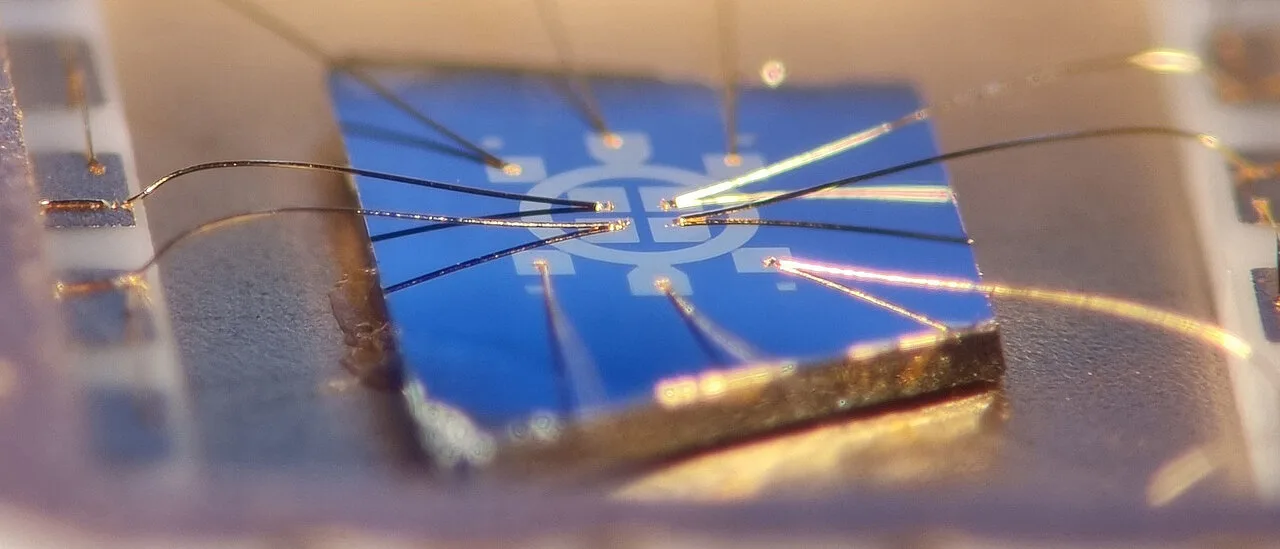Researchers at the University of Würzburg, led by Professor Charles Gould, have developed a method to improve the accuracy of resistance measurements in electronics, using a quantum phenomenon known as the Quantum Anomalous Hall Effect (QAHE). This method allows the quantum Hall effect to exist at zero magnetic field, simplifying the experiment and making it ideal for defining physical quantities like the kilogram.
The team has also found a way to neutralize the electric field that disrupts the QAHE at higher currents, making the resistance standard based on QAHE more robust. The Free State of Bavaria, the German Research Foundation DFG, and the European Commission funded the research.
Quantum Anomalous Hall Effect: A New Approach to Resistance Measurement
Researchers at the University of Würzburg have developed a novel method to enhance the performance of quantum resistance standards. This method is based on a quantum phenomenon known as the Quantum Anomalous Hall Effect (QAHE). The QAHE allows the quantum Hall effect to exist at zero magnetic field, which simplifies the experiment and provides an advantage when determining physical quantities like the kilogram.
The precise measurement of electrical resistance is crucial in various fields, including industrial production and electronics. For instance, in the manufacture of high-tech sensors, microchips, and flight controls, even the smallest deviations in resistance measurements can significantly affect these complex systems. The new measurement method developed by the Würzburg team can significantly improve the accuracy of resistance measurements without any external magnetic field.
The Quantum Anomalous Hall Effect and Its Significance
The Quantum Anomalous Hall Effect is a special feature that allows the quantum Hall effect to exist at zero magnetic field. This operation in the absence of any external magnetic field not only simplifies the experiment but also provides an advantage when it comes to determining another physical quantity: the kilogram. To define a kilogram, one has to measure the electrical resistance and the voltage simultaneously. However, measuring the voltage only works without a magnetic field, making the QAHE ideal for this purpose.
Until now, the QAHE was measured only at currents which are far too low for practical metrological use. The reason for this is an electric field that disrupts the QAHE at higher currents. The Würzburg physicists have now developed a solution to this problem. They neutralize the electric field using two separate currents in a geometry they call a multi-terminal Corbino device. With this new trick, the resistance remains quantized to h/e2 up to larger currents, making the resistance standard based on QAHE more robust.
Towards Practical Application: A Feasibility Study
In their feasibility study, the researchers demonstrated that the new measurement method works at the precision level offered by basic d.c. techniques. Their next goal is to test the feasibility of this method using more precise metrological tools. To this end, the Würzburg group is working closely with the Physikalisch-Technische Bundesanstalt (German National Metrology Institute, PTB), who specialize in this kind of ultra-precise metrological measurements.
This method is not limited to the QAHE. Given that the conventional Quantum Hall Effect experiences similar electric field driven limitations at sufficiently large currents, this method can also improve the existing state of the art metrological standards, for applications where even larger currents are useful.
Funding and Future Directions
The research was funded by the Free State of Bavaria, the German Research Foundation DFG, the Cluster of Excellence ct.qmat (Complexity and Topology in Quantum Matter), and the European Commission. The research team also participates in the Cluster of Excellence ct.qmat, which has been jointly run by Julius-Maximilians-Universität (JMU) Würzburg and Technische Universität (TU) Dresden since 2019.
The team’s future direction includes testing the feasibility of this method using more precise metrological tools. They are also looking into the potential of this method to improve existing metrological standards, particularly for applications where larger currents are useful.
Patent Protection and Publication
The experimental method developed by the Würzburg team is protected under a European Patent Filing no. EP23162996.5. The study, titled “A balanced quantum Hall resistor,” has been published in Nature Electronics. The research team’s contribution to the field of quantum resistance standards is a significant step forward, offering a new approach to resistance measurement that could have wide-ranging applications in various industries.
External Link: Click Here For More

